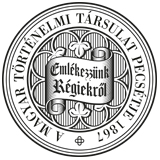Századok – 2013
A MAGYAR TÖRTÉNELMI TÁRSULAT 2012. ÉVI VÁNDORGYŰLÉSE - Komjáti Zoltán Igor: "…Keserves órái és napjai sok ezer léleknek…" (Fülek 1682-es ostroma) IV/1001
1030 KOMJATI ZOLTÁN IGOR Aztán 1682. november közepén a 100 német és magyar védővel Csábrágon bezárkózott főúr azt írta Imre öccsének, hogy az őket ostromlók csak nemrég mentek el a falak alól, és a bányavárosokból származó nagy mennyiségű aranyat és ezüstöt vittek magukkal. A törökök által összesen fogságba elhurcolt emberek számát Koháry Farkas 5000 főre tette.135 136 Nógrád vármegye még 1684 őszén sem látta lehetségesnek a füleki megyerész megadóztatását annak lepusztult volta miatt, hiszen az ostrom alatt és után is a hódítók alaposan felprédálták. Emiatt a contributio megfizetése alól felmentették a környék lakosságát.136 „...KESERVES ÓRÁI ÉS NAPJAI SOK EZER LÉLEKNEK...” (BITTER HOURS AND DAYS FOR THOUSANDS OF SOULS) (The Siege of Fülek in 1682) by Igor Zoltán Komjáti Summary The study examines, on the basis of fresh archival research, the preliminaries of the siege of Fülek in 1682, the course of the siege itself, and the crucial consequences of the castle’s fall. It also establishes a synthesis of the information offerred by the previous Koháry autobiographies and the relevant historiographical works. In the late summer of 1682, spirited by the success of the campaign in Northern Hungary, Imre Thököly and Ibrahim, pasha of Buda, decided to lay siege to the castle of Fülek. Through the acquisition of Fülek they aimed, on the one hand, at neutralising the most important among the castles which defended the mining towns, and, on the other hand, by winning over the defenders of Fülek, at offerring an example of capitulation for the other garrisons which belonged to the military district of the mining towns. István Koháry, imperial captain of Fülek since his appointment in 1667, realised the danger menacing the castle early in the summer, and accordingly used all means and the full weight of his social influence in order to improve the defensive capacity of the walls and to make up for the deficiencies in the provision of the garrison. After several futile calls for capitulation, the Hungaro-Ottoman troops started to invest and bombard the castle on 25 August. Thanks to intensive canon fire and the repeated assaults undertaken by the Ottoman infantry, the number of the defenders diminished constantly, and they were gradually forced to take refuge in the upper castle. Because the imperial force of relief, led by imperial generals Carlo Strassoldo and Aeneas Caprara successively, failed to turn up, those shut up in the castle began to contemplate, at the back of István Koháry and against his will, surrender. On 10 September the garrison, opposing their captain and his immediate circle, capitulated before Imre Thököly. The sixteen-day defence of Fülek successfully prevented Thököly from expanding his authority beyond the river Garam, thereby posing an imminent threat to Pressburg and Vienna, and also from occupying Léva before the onset of the winter. On the other hand, it was a direct consequence of the fall of Fülek that the smaller forticications in the district of the mining towns successively subjected themselves to Thököly, who also managed to occupy the mining towns themselves. 135 MNL OL C 1058. tekercs. No. 986. (SABB, Koháry-család levéltára, Pars I.) Koháry Farkas levele Koháry Imrének (Csábrág, 1682. november 18.) 136 MNL NML rV-l/a. 4. kötet. 63. Nógrád vármegye megyegyűlési jegyzőkönyvei (Gács, 1684. ősz). A pusztításról: „...vix aliquid, praeter corpus & animam superesset tempore enim subsidionis & dirutionis Praesidii Fülekiensis, pagorum maximé pars hujus Comitatus per Turcas & Rebelles aliosque hostes conbusta, in cineres con versa & totaliter devastata est...”
